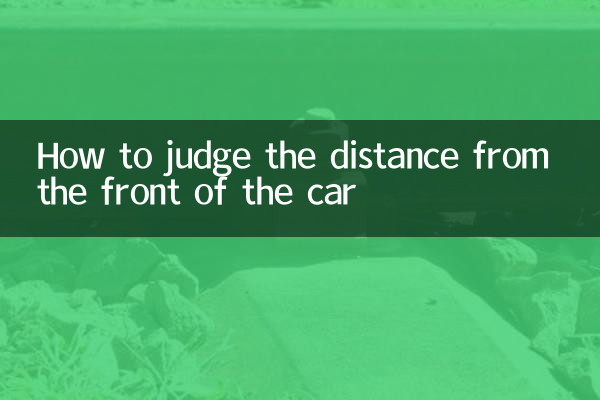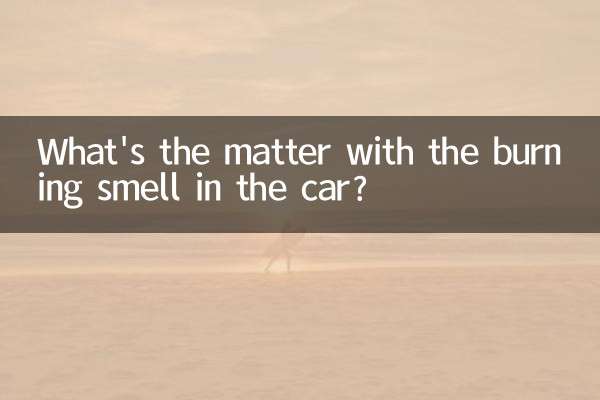How to judge the distance from the front of the car: driving skills and practical methods
In daily driving, accurately judging the distance between the front of the car and the obstacle ahead is the key to ensuring safety. Many novice drivers and even some experienced drivers are confused by this. This article will combine the hot topics and hot content on the Internet in the past 10 days to provide you with structured data and practical tips to help you easily master the method of judging the distance between the front of the car.
1. Analysis of hot topics and hot content

| hot topics | focus of discussion | heat index |
|---|---|---|
| Frequently Asked Questions for Novice Drivers | Tips for judging distance from head to head | ★★★★★ |
| driving safety | How to avoid rear-end collisions | ★★★★☆ |
| vehicle technology | The use of reversing radar and 360 images | ★★★☆☆ |
2. Practical methods for judging distance between vehicles
1.reference method: Judge the distance based on the relative position of the front of the car and the obstacle in front. The following are common reference objects and distance relationships:
| Reference object | Distance (meters) | Description |
|---|---|---|
| Lower edge of front tire | about 3 meters | When you can see the lower edge of the front tire, the distance is about 3 meters |
| Lower edge of front bumper | about 2 meters | When you can see the lower edge of the front bumper, the distance is about 2 meters |
| Lower edge of the front license plate | about 1 meter | When you can see the lower edge of the license plate of the vehicle in front, the distance is about 1 meter |
2.body proportion method: Judge the distance by observing the proportion of the obstacle ahead in the windshield. For example, if the height of the obstacle occupies 1/3 of the windshield, the distance is about 5 meters; if it occupies 1/2, the distance is about 3 meters.
3.technology-assisted method: Modern vehicles are usually equipped with reversing radar or 360 panoramic images, which can determine the distance through on-screen prompts. The following are the pros and cons of common technological assistive devices:
| Device type | Advantages | Disadvantages |
|---|---|---|
| Reversing radar | Real-time alarm and accurate ranging | Only in low speed scenarios |
| 360 panoramic image | Visual display of surrounding environment | Depends on camera clarity |
3. Distance judgment skills in different scenarios
1.When parking: When parking in a parking lot or on the roadside, you can judge the distance by observing the position of the obstacle in front and the hood. When the hood just covers the bottom of the obstacle, the distance is about 0.5 meters.
2.When following a car: When following a car on a congested road, it is recommended to keep a safe distance of more than 2 meters. This can be determined by whether the lower edge of the license plate of the vehicle in front is visible.
3.When reversing: When reversing, the front of the car will swing outward. Pay special attention to the distance from side obstacles. It is recommended to make a comprehensive judgment based on the rearview mirror and reversing image.
4. Precautions
1. The field of view of different vehicle models is quite different. It is recommended that the driver be familiar with the field of view characteristics of his own vehicle.
2. When driving on rainy days or at night, the line of sight is limited and the safety distance should be increased appropriately.
3. Do not rely solely on technological equipment, but rely on visual observation and empirical judgment.
Through the above methods and techniques, you can more accurately judge the distance ahead of the car and improve driving safety. Hope this article helps you!

check the details

check the details